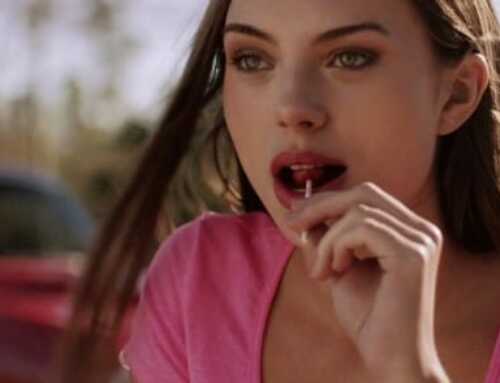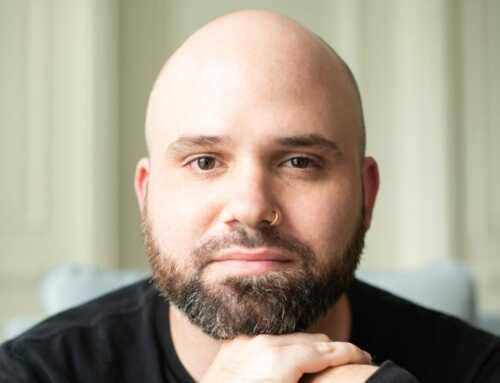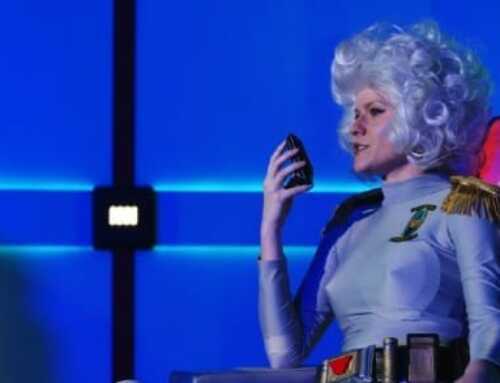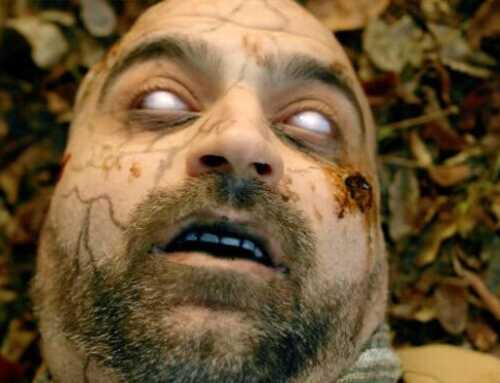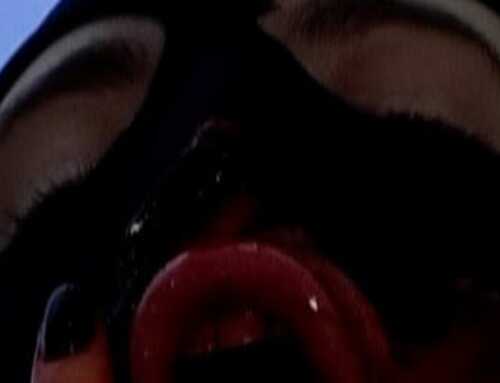Welcome Villain Films’ Malum is a reimagining of the 2014 film Last Shift. You might ask, why do we need a remake to be released? Director Anthony DiBlasi explains, “I’m very happy with that first film, but we obviously had to leave some things on the table because of the size of the movie and our shooting schedule. Also, I always felt the first film would play well in theaters, and that it would play well with a crowd. Going into this one, we knew it would do a theatrical release in the States, and that was really important to me, so an audience can see it the way it was meant to be seen.”

In case you don’t know the Malum premise, the description states: On a search to uncover the mysterious circumstances surrounding her father’s death, a newly appointed police officer, Jessica Loren (Jessica Sula) is assigned to the last shift in a decommissioned police station where a notoriously vicious cult saw their demise… The lone officer at the station, she soon finds herself barraged by terrifying paranormal events, and in the process, is taken on a journey in which she learns the shocking truth behind her family’s connection to a demented cult leader.
HorrorBuzz got a chance to speak with the film’s cinematographer Sean McDaniel about creating the visual language of Malum. Read the full Q&A below.
What would you say is the most memorable moment you have from working on Malum?
That’s a tough one. There were a lot of great moments on the movie. The one that maybe surprised me the most was the final day of shooting in the police station. We had been shooting there for so long that I think by the end of it, a lot of the crew was ready to be out of that space for a while. A lot of the floors are built in an odd way on purpose to be disorienting, so if a prisoner escaped they couldn’t find their way out easily. But we had spent so much time there and I knew the space so well from shooting it, that I kind of grew comfortable working there because I knew it so well. Definitely wasn’t expecting that.
Did you try any new techniques on Malum that you have never done before?
The biggest thing was really utilizing the small size and light weight of the LED units. We were putting magnets on them and sticking them all over the place. The crew could rig lights ahead of us at a much quicker pace, so it was great for helping stay on schedule. Another thing was having a roaming jemball that would follow the actors as we moved through scenes. Because there was so much movement and we were shooting fairly wide, to see the space we couldn’t always have lights on stands in a static location. So having a soft, dimmed down light that could travel with the actor was huge and became a subtle dance with our blocking and camera movement. It’s something we’ve all used before, but this was definitely the most I’ve utilized it.
Malum is a reimagining of the 2014 film, Last Shift. Do you know that film’s cinematographer, Austin Schmidt, or speak to him about his work on the film?
I haven’t had the opportunity to meet Austin yet. Anthony and I didn’t talk too much about the look of the first film because we really started from the script and that already had such a different feel. Also, the first movie looks great. We didn’t feel any need to do anything counter to what was done with that movie. We really worked from the narrative for this one and then responded to what our police station had to offer which was very different from the first movie. So it was about leaning into the strengths of the location and modifying as needed.
Did you get inspiration from any other horror films for Malum? Are there any nods to other films in Malum?
Anthony and I talked a bit about Sinister and the 2013 Evil Dead remake. Sinister has some similar investigation/mystery elements that were a good reference point for how to think about those kind of watching footage and looking through paperwork scenes. It also really embraces strong shadows and high contrast which we were interested in as well. Evil Dead was a good reference for the more intense horror moments. That movie goes really hard in the gore and brutality, which there is definitely some of in this movie as well. There are just few nods to the original Last Shift in this movie, but with a new take that I think will surprise audiences.
What would you say is key to filming a good jump scare?
It really depends on the type of jump scare. But the pacing of the build up is always key. You want to create that anticipation and then pay it off at just the right moment or subvert it and get them right after they think they’re safe. We really have a variety of jump scares in the movie. There’s even one that I would say is almost an intellectual jump scare. Once you think about what you’re seeing in the moment and what it really means, it suddenly becomes a scare. It’s my favorite one in the movie.
There is a live pig in Malum. Did anything humorous happen with the pig while on set?
Yahtzee was a true professional. This was her first movie, but you wouldn’t know it. During prep it was definitely a concern as to how she would be on set and if she’d settle enough to get the shots we needed, but it was honestly so much easier than expected. I do have some great pictures of her riding an elevator and then following a breadcrumb trail of food to get to set.
A lot of people online have been comparing Malum to Assault on Precinct 13 and The Shining. What do you think about this?
That’s a real compliment. Two amazing movies! I definitely see the initial comparison just in the sense of the police station setting and then the descent into madness. But I think it also really works tonally. Carpenter’s work is really great at getting into the moments of tension and horror so well, which we definitely tried to do here. And The Shining creates that almost hypnotic mood that just pulls you in and keeps you unsettled. We really tried to do both of those things with this movie as well.
Because Malum falls into the horror genre, were you able to experiment more than other non-horror projects you have worked on?
It definitely feels like there’s more room to push lighting as the story descends into madness. The movie has what I would call a naturalistic look, but set in a slightly more heightened world. And you want to start from a fairly grounded place, so you have the opportunity to escalate things. So as we get towards the end, it was fun to get a little more baroque. Lighting is so crucial to so many horror moments that it is a great opportunity for pushing things you might not normally be able to. So much of the genre is about what you can or can’t see.
Can you talk about the color palate you used for Malum? How did you land on it?
The movie has a lot of blue and green whether that be in the set design, costumes, or lighting. The big thing was that the police station we found already had a lot of those colors naturally, so we were able to lean into that and modify elsewhere as needed. At the same time, we built a color language to the lighting for different locations around the station. Sometimes embracing that same color palate and sometimes contrasting it. It really helps to ground the audience in where they are while also creating the appropriate mood.
Malum is now in theaters. You can learn more about Sean McDaniel at http://seanmcdanieldp.com/.



